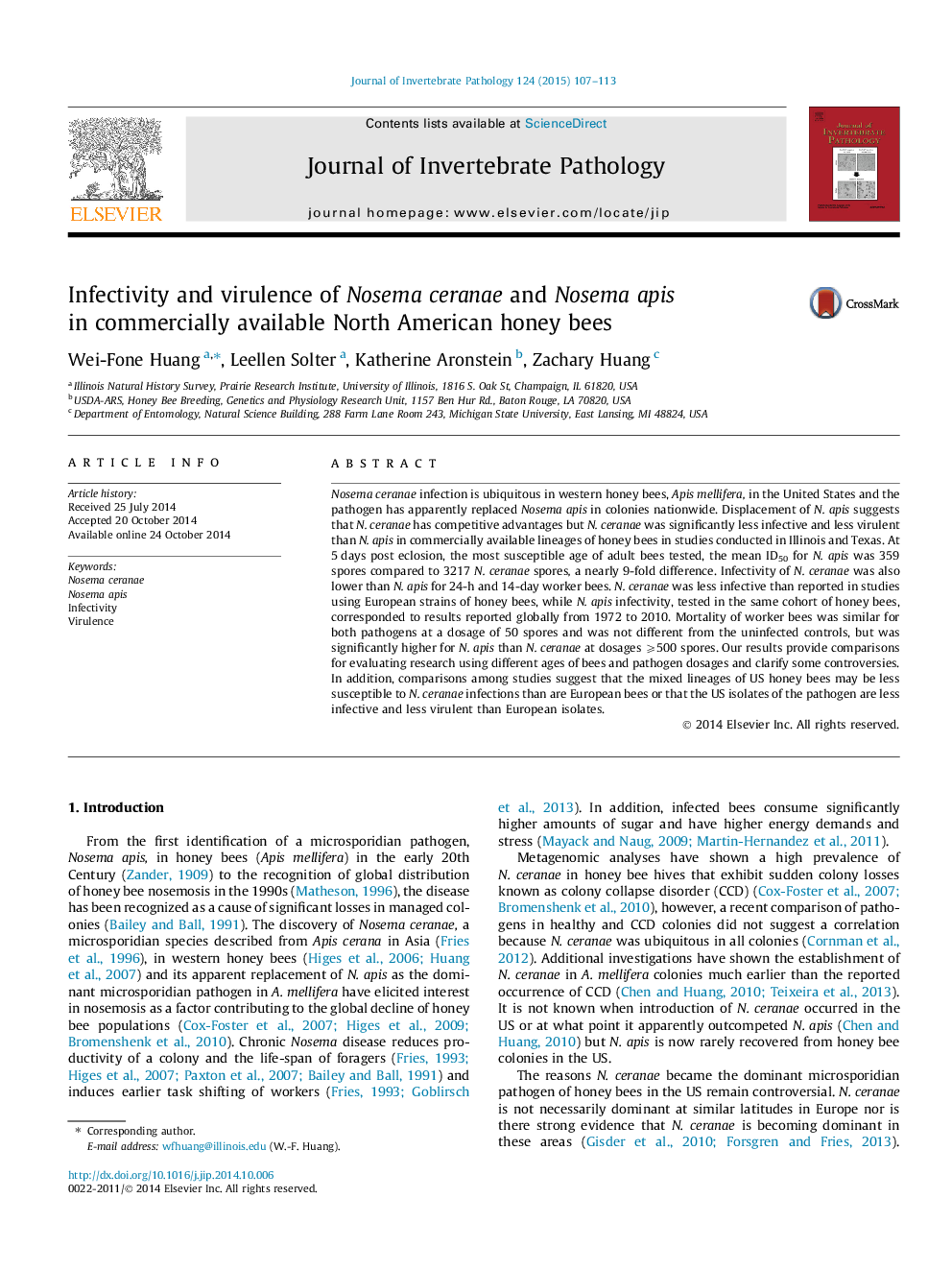| Article ID | Journal | Published Year | Pages | File Type |
|---|---|---|---|---|
| 6389520 | Journal of Invertebrate Pathology | 2015 | 7 Pages |
â¢Nosema ceranae was less infective and possibly less virulent than Nosema apis in tests of US honey bees.â¢Nosema apis infectivity was similar to previously reported research results.â¢Nosema ceranae appears to be less infective and less virulent to US honey bees than to European honey bees.â¢Nosema ceranae infectivity was significantly affected by the age of workers; 5 day-old bees were the most susceptible.
Nosema ceranae infection is ubiquitous in western honey bees, Apis mellifera, in the United States and the pathogen has apparently replaced Nosema apis in colonies nationwide. Displacement of N. apis suggests that N. ceranae has competitive advantages but N. ceranae was significantly less infective and less virulent than N. apis in commercially available lineages of honey bees in studies conducted in Illinois and Texas. At 5 days post eclosion, the most susceptible age of adult bees tested, the mean ID50 for N. apis was 359 spores compared to 3217 N. ceranae spores, a nearly 9-fold difference. Infectivity of N. ceranae was also lower than N. apis for 24-h and 14-day worker bees. N. ceranae was less infective than reported in studies using European strains of honey bees, while N. apis infectivity, tested in the same cohort of honey bees, corresponded to results reported globally from 1972 to 2010. Mortality of worker bees was similar for both pathogens at a dosage of 50 spores and was not different from the uninfected controls, but was significantly higher for N. apis than N. ceranae at dosages ⩾500 spores. Our results provide comparisons for evaluating research using different ages of bees and pathogen dosages and clarify some controversies. In addition, comparisons among studies suggest that the mixed lineages of US honey bees may be less susceptible to N. ceranae infections than are European bees or that the US isolates of the pathogen are less infective and less virulent than European isolates.
Graphical abstractDownload full-size image
